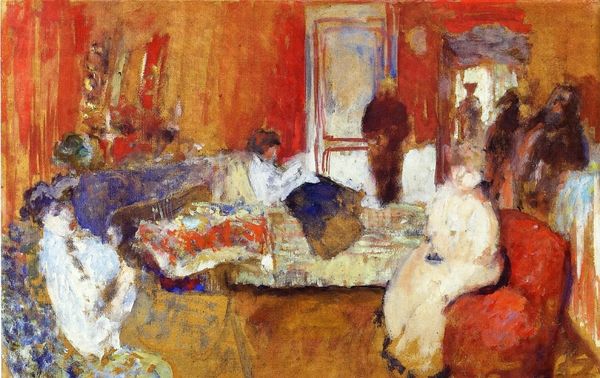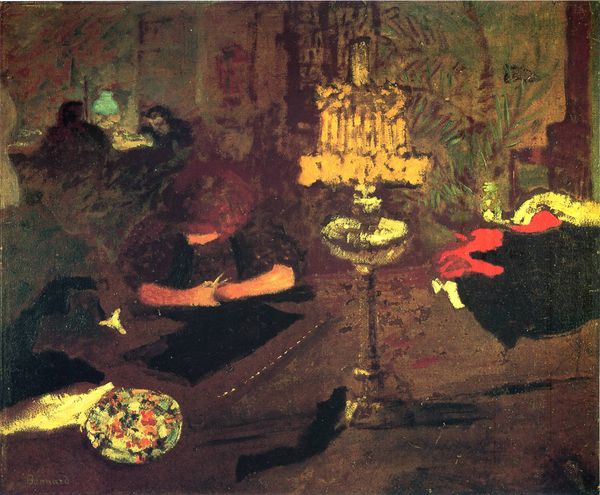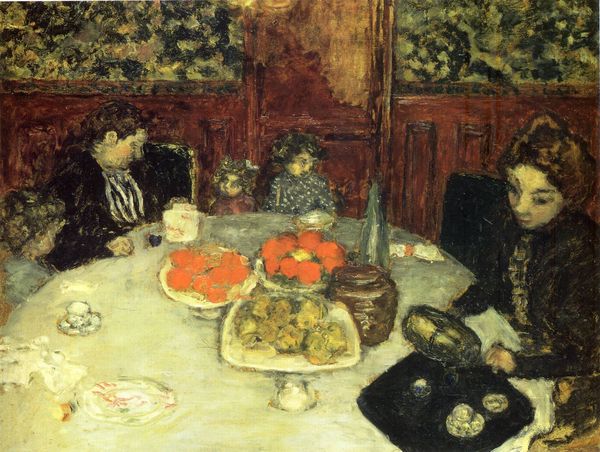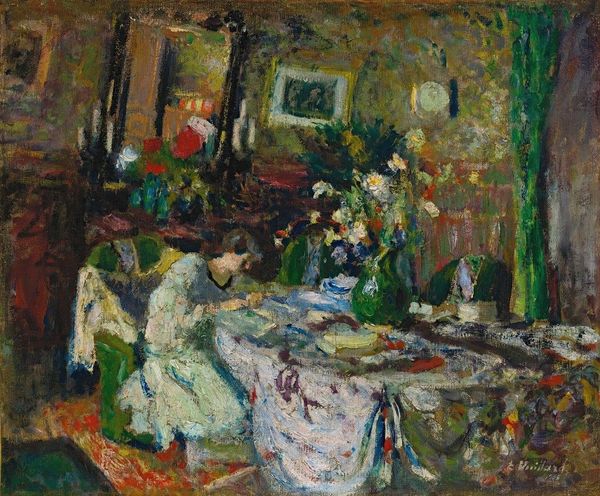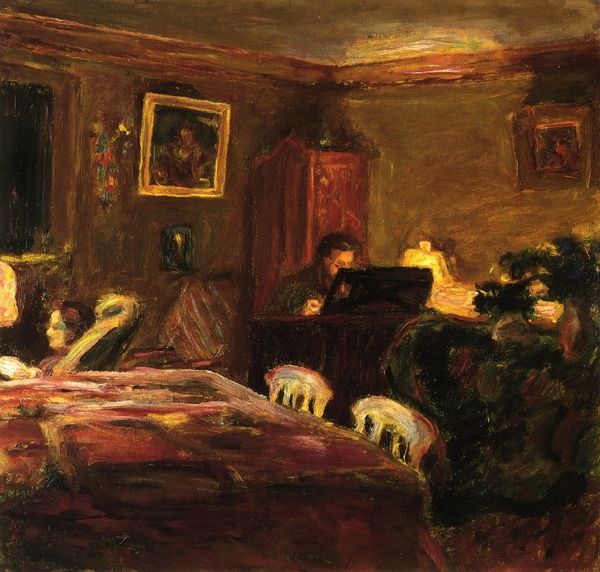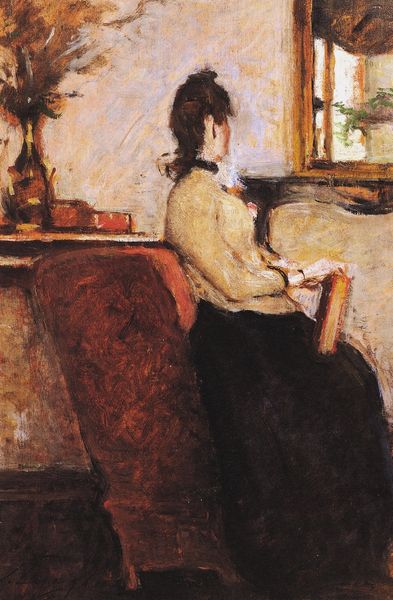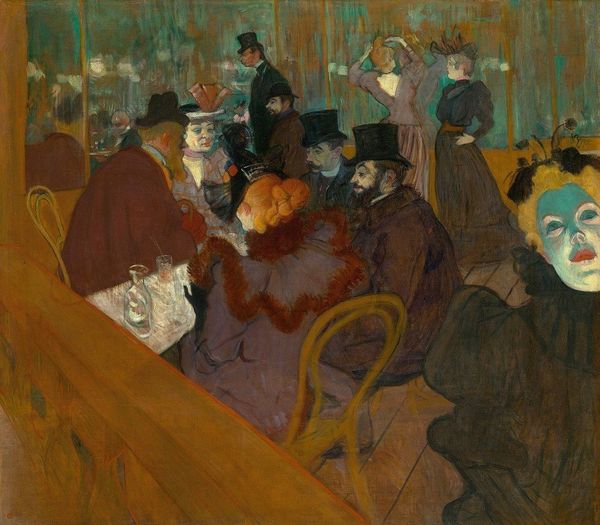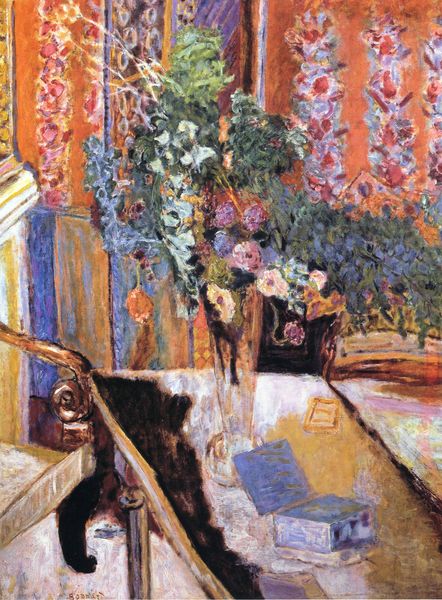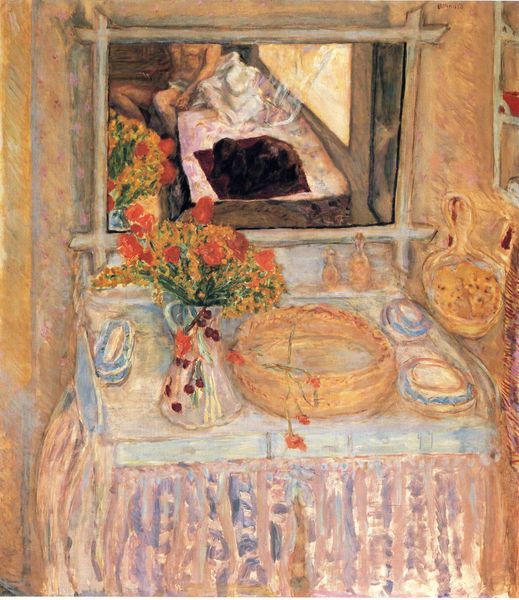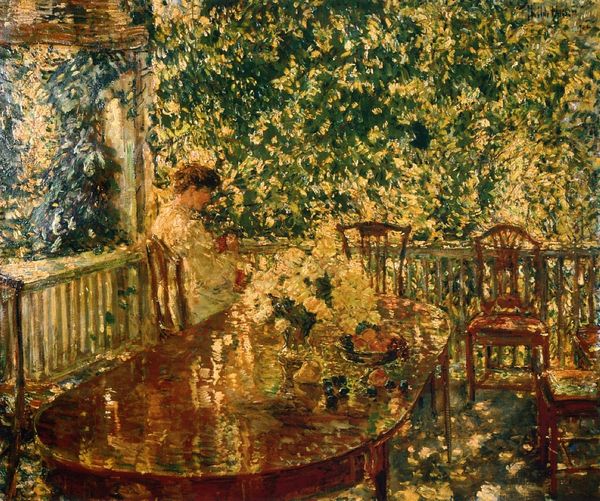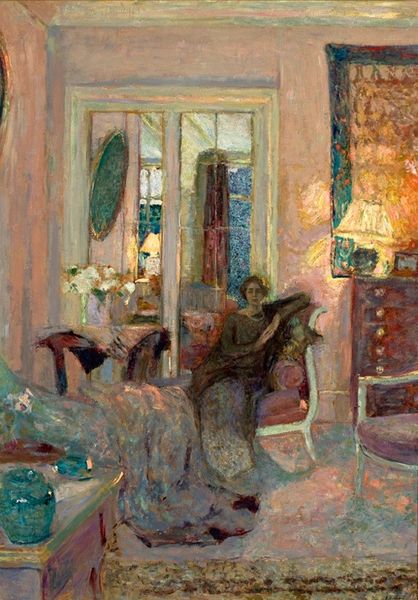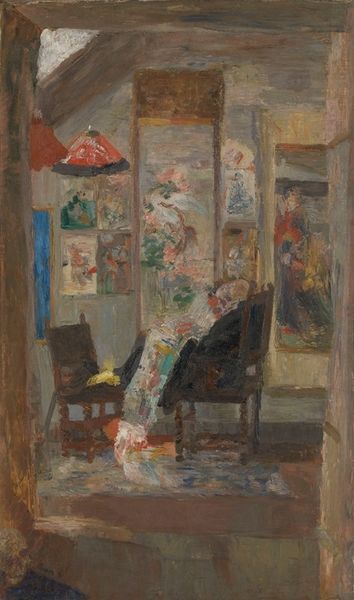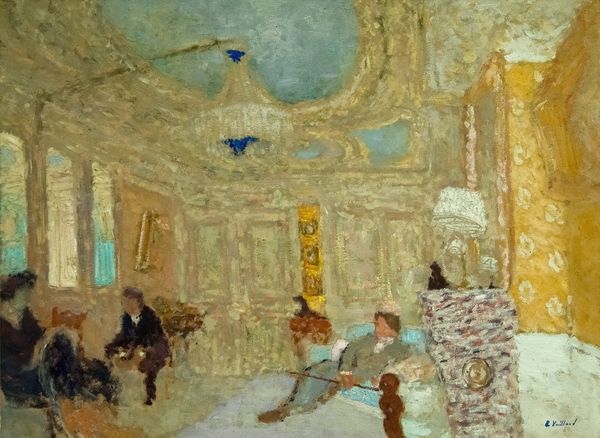
painting, oil-paint, impasto
#
painting
#
oil-paint
#
figuration
#
oil painting
#
impasto
#
intimism
#
symbolism
#
genre-painting
#
post-impressionism
Dimensions: 48.3 x 52.7 cm
Copyright: Public domain
Curator: Stepping in closer, we can examine Édouard Vuillard’s “In Front of a Tapestry,” painted in 1899. It is currently held in a private collection. Editor: My immediate reaction is that it’s wonderfully claustrophobic. The composition is so compressed, and the textures blend to create this hazy atmosphere. It feels quite intimate. Curator: Vuillard was part of the post-impressionist movement and key figure of the Intimist group, so intimacy is central to understanding the work. What seems spontaneous is in fact, the product of carefully arranged formal structures of post-impressionism. He’s depicting a genre scene. We can consider who is the artist creating work for, and what are their concerns? Editor: Yes, but let's consider the pure visuality here first! The almost-monochromatic tones—the pervasive ochre, umber, and cream—establish an aesthetic coherence, where even the figures meld into the environment, but at what cost? Curator: In that regard, it is quite evocative of its time, the Belle Époque. Consider also the choice of tapestry in the background, the choice of domestic setting, the labor of domesticity… are we simply seeing women’s labor as a sign of the times? Editor: Perhaps! The materiality contributes greatly. Vuillard's use of oil paint, applied with an almost impasto-like thickness in areas, serves to further flatten the picture plane. The tangible texture creates a rich, almost tactile experience for the viewer. Notice how this texture contributes to the figures' anonymity, their becoming forms among many forms. Curator: Absolutely. And those forms reflect the societal pressures of the time; even as the figures become abstracted. The work is not simply decorative. In the turn of the 20th century, tapestries would indicate bourgeoise taste but would rely on labor for production. We might consider what messages are created through display of material, labor, and ownership. Editor: In considering all of that, I can now appreciate its subtly radical formal aspects; it really pulls the viewer in to explore and think deeply about its subjects. It seems so simple but really asks much from the viewer! Curator: And from ourselves, as we see its connections to both past and present! Thank you for expanding my consideration of this work of art.
Comments
No comments
Be the first to comment and join the conversation on the ultimate creative platform.
